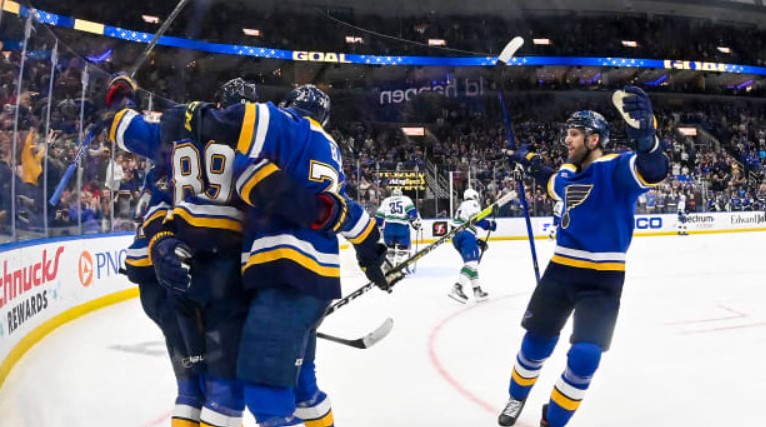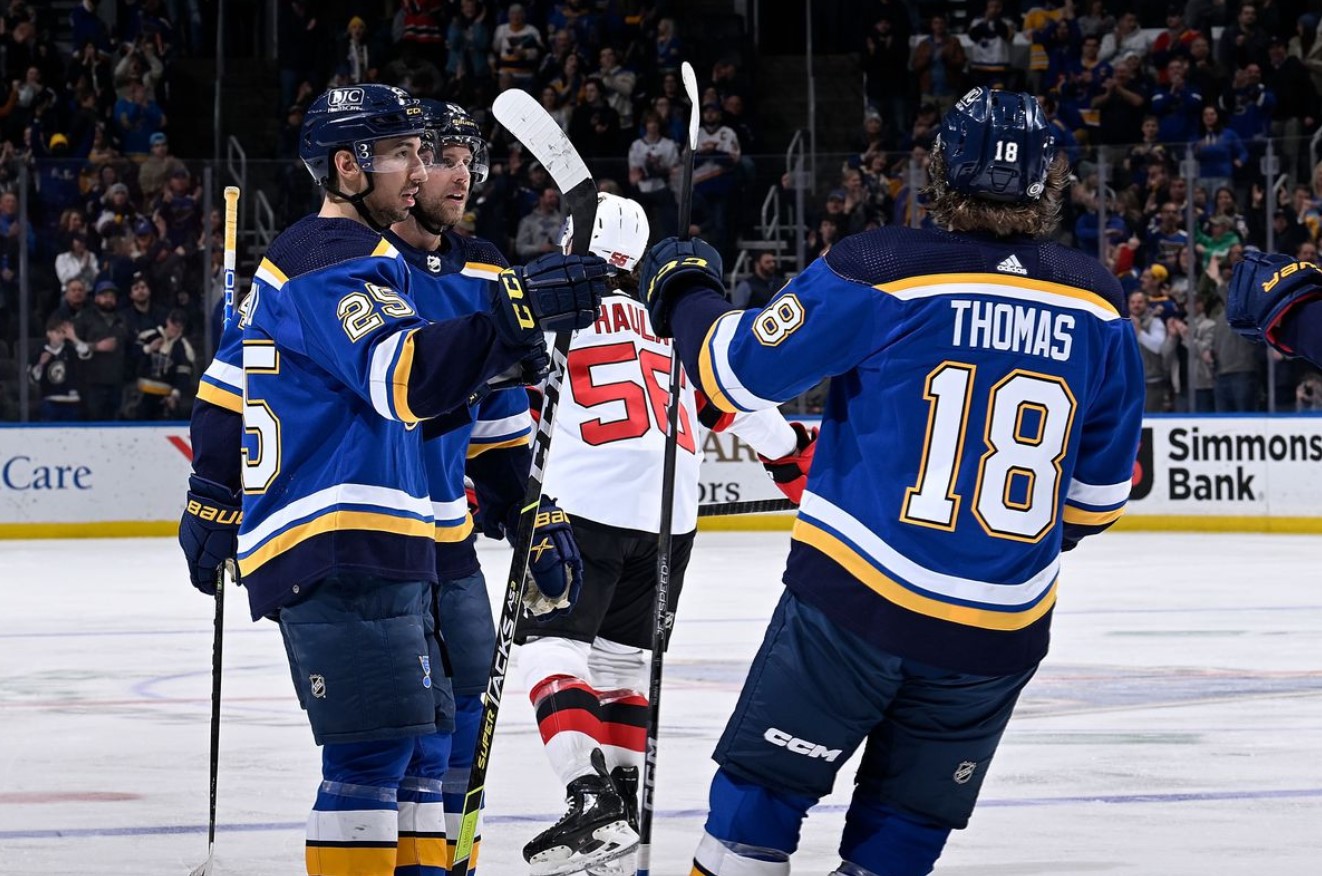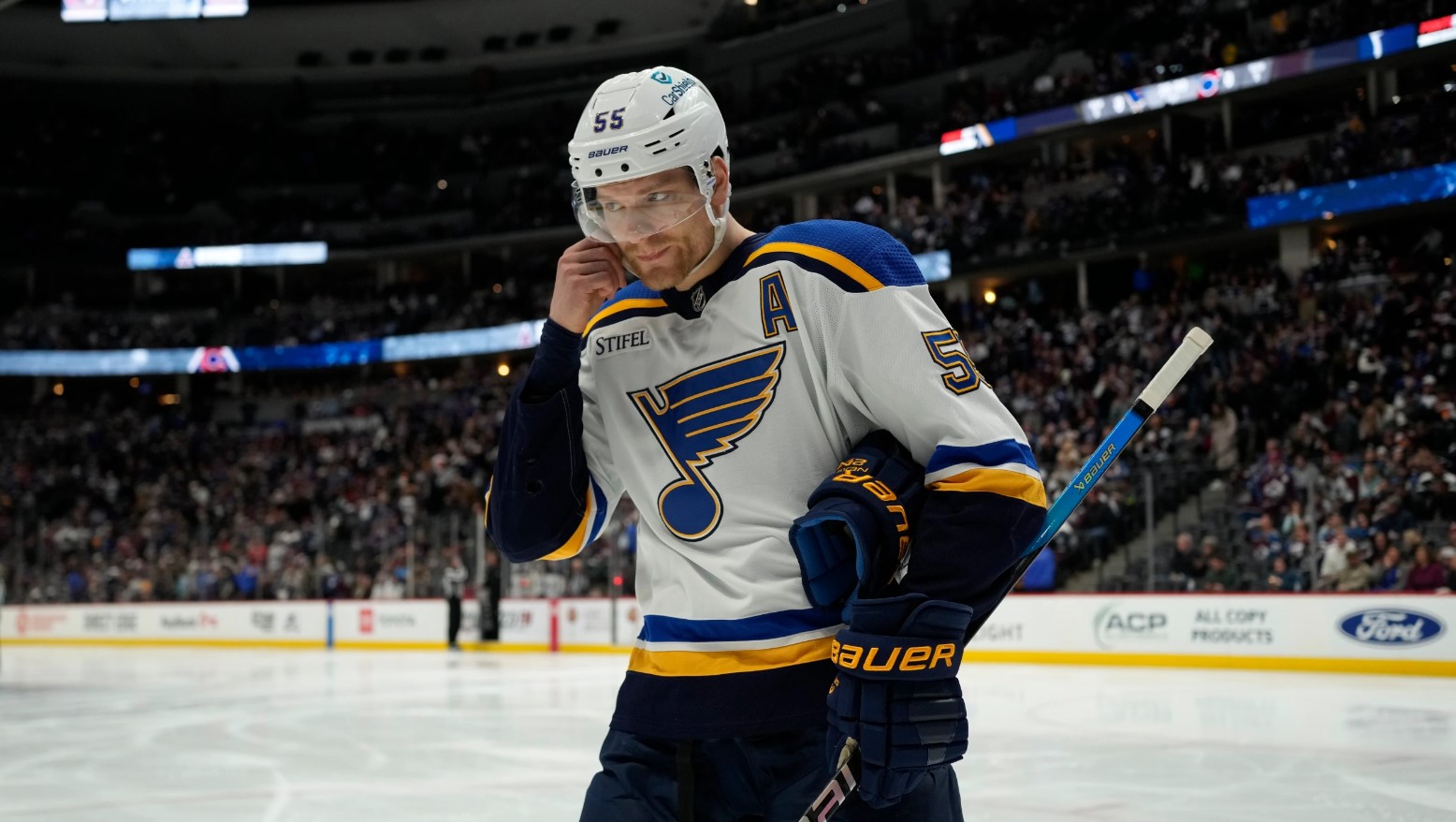St. Louis Blues‘s phone number, contact information, fan mail address, and other contact information and details are all provided on this page.
St. Louis, Missouri is home to a professional ice hockey team known as the Blues, who play in the National Hockey League. In the National Hockey League, you can find them competing in the Central Division of the Western Conference (NHL). The group was named after a well-known song written by W. C. Handy “St. Louis, Missouri The Blues were one of the six teams that were added to the National Hockey League as part of the expansion that took place in 1967.
The other five teams were the Minnesota North Stars, the Los Angeles Kings, the Philadelphia Flyers, and the Pittsburgh Penguins. The influential Wirtz family of Chicago owned both the Blackhawks and the deteriorating St. Louis Arena at the time. The Wirtz family still owns the Blackhawks today.
The Wirtz desired to get rid of the Arena, which had been neglected since the 1940s. As a result, they exerted pressure on the National Hockey League to award a franchise to St. Louis instead of Baltimore, despite the fact that St. Louis had never even submitted a formal expansion bid. In 1966, business magnate Sid Salomon Jr., along with his son Sid Salomon III and Robert L. Wolfson, became the initial owners of the team.
They were awarded the franchise that same year. Sid Salomon III was successful in convincing his father, who was initially skeptical, to submit a bid for the team. After that, Salomon invested millions of dollars in modernizing the arena, which was 38 years old at the time and increasing the capacity from 12,000 to 15,000. Prior to the opening night performance in October 1967, Seth Martin, Al Arbour, Noel Picard, Jimmy Roberts, and Keith McCreary were in the cast.
The Blues were able to distinguish themselves despite playing in the weaker Western Division. This was accomplished despite the fact that the rules of the league effectively kept star players with the Original Six. The Blues were able to take advantage of a playoff format that required an expansion team to reach the Stanley Cup Finals, and as a result, they made it to the final round in each of their first three postseason appearances.
The fact that Hull and Keenan had been at each other’s throats for a long time did not prevent Hull from signing with the Dallas Stars in 1998. After that, he went on to win the Stanley Cup with the Stars the following year, sealing the deal with a controversial goal that he scored against Dominik Hasek of the Buffalo Sabres. They earned the Presidents’ Trophy in 1999–2000 for having the best record in the league thanks to their 114 points in the regular season.
which was a franchise record at the time. They were unable to get past the first round, where they were eliminated by the San Jose Sharks in seven games. In 2001, the Blues made it all the way to the Western Conference Finals, but ultimately lost in five games to the Colorado Avalanche, who went on to win the championship. They continued to be competitive for the following three years, but they were never able to move on past the second round.
The players Red Berenson and Barclay Plager were acquired in exchange for Ron Stewart and Ron Attwell. Both players were elevated to regular roles almost quickly, and Plager would go on to spend his whole career with the Blues, becoming captain along the way. Berenson finished the 1967–1968 season as the scoring leader for the Blues, more than tripling his career total in only 55 games played. The conversation took place on December 27, 1967 between Don McKenney and Red Berenson, and Gerry Melnyk.
While the first Blues teams featured aging and fading veterans like Doug Harvey, Don McKenney, and Dickie Moore, the veteran goaltending tandem of Glenn Hall and Jacques Plante proved more durable, winning the Vezina Trophy in 1969 behind a sterling defense that included players such as skilled defensive forward Jim Roberts and hardrock brothers Bob and Barclay PlageBlues. While the first Blues teams featured veterans like Doug Harvey, Don McKenney, and Dickie Moore, the veteran goaltending “, and gives their performances at the Enterprise Center, which is located in the downtown area of St. Louis and has a capacity of 19,150 people.

Let’s have a look at St. Louis Blues’s profile, which includes his contact, phone number, email, Autograph request address, and email Id, as well as his mailing address, fan mail address, and residence number.
St. Louis Blues Fanmail Address :
St. Louis Blues
Enterprise Center
1401 Clark Avenue
St. Louis, MO 63103-2700
USA
If you are one of his many admirers and who want to write a letter to St. Louis Blues, we recommend that you utilize his fan mail address provided here. According to the AR, the fan mail address is St. Louis Blues, Enterprise Center, 1401 Clark Avenue, St. Louis, MO 63103-2700, USA
The worth of an autograph is determined by a number of things, including desire, popularity, and what was autographed. What is the uniqueness of the signature? What is the status of the signature, how easily accessible it is, and how unusual is it? What network is it linked to? and much more.
The team entered the National Football League in 1967 as one of the expansion franchises, at a time when the league was expanding from six to twelve teams. The success that the Blues had in the late 1960s and early 1970s did not, however, continue into the 1970s because the playoff system was altered and the Chicago Blackhawks were moved to the Western Division, which was considered to be the weaker of the two divisions.phenom who, in the 1990–1991 season, scored 86 goals on his way to earning the Hart Memorial Trophy as the most valuable player in the league.
The 86 goals that Bobby Hull scored in a single season set a new record for the most goals scored by a right winger in a single season and positioned Hull third all-time in a single season for any position; only Wayne Gretzky has scored more goals in a single season for any position (92 in 1981–82 and 87 in 1983–84). Mario Lemieux was the previous holder of that record, and he set it in the 1988–1989 season by scoring 85 goals in 76 games. In addition, over any given three-year stretch, Gretzky was the only player who scored more goals than Hull did.
In spite of the fact that the Blues finished the regular season with the second-best record in the league, they were ousted from the playoffs by the Minnesota North Stars in the second round. This loss served as a metaphor for St. Louis’ difficulties in the postseason. It was originally planned for the St. Louis Blues trumpet jersey to make its debut in the year 1996.
Mike Keenan, the head coach of the squad, objected to the uniforms and pledged that his players would never have to wear them. From the Presidential Trophy to Struggling During His Presidency (1997–2006) Mike Keenan was appointed as both the general manager and the coach of the Blues prior to the abbreviated 1995 season in the belief that he could put an end to the post-season upheaval that Blues supporters had been suffering through for years.
Keenan undertook dramatic changes, including transactions that resulted in the departure of fan favorites Brendan Shanahan and Curtis Joseph. Keenan also acquired the iconic but aging Wayne Gretzky and goaltender Grant Fuhr from the floundering Los Angeles Kings (Gretzky left for the New York Rangers as an unrestricted free agent following the season). Keenan’s postseason record with the Blues was not as successful as he had hoped, despite the fact that Wal-Mart heir Nancy Walton Laurie and her husband Bill had purchased the team in 1999.
On June 17, 2005, the Lauries made the announcement that they would be selling the team. Bill Laurie, a former point guard for Memphis State, had long had the ambition of owning an NBA club, and it was believed that this desiring investment group led by Dave Checketts, a former president of Madison Square Garden, would fulfill that ambition. On November 14, 2005, the Blues made the announcement that SCP Wor would not be returning.
However, the Blues’ defense was subpar, and as a result, both the Chicago Blackhawks and the Philadelphia Flyers were able to take control of the division. The Blues were moved to the Smythe Division as a result of a realignment, which occurred after they missed the playoffs for the first time in the 1973–1974 season. This division was especially poor, and the Blues were able to win it in 1976–1977 despite having a record that was five games worse.
500, despite the fact that it would be their sole participation in the playoffs for the decade. During this time, the business came dangerously close to going bankrupt. This was partially the result of pressures brought on by the World Hockey Association, but the primary cause was the financial choices that the Salomons made when they first purchased the franchise. At the same time that the Blues’ performance started to decline, deferred contracts started coming due.

St. Louis Blues Phone number and Contact Details:
Due to his vast following, it is impossible to directly contact him. His phone number is Not Available. We may also offer his office fax number Not Available.
Please note that we do not have his personal phone number. You may contact him via his assistant.
St. Louis Blues Official Website and Email Id:
| Autograph Request Address | St. Louis Blues, Enterprise Center, 1401 Clark Avenue, St. Louis, MO 63103-2700, USA |
| Fanmail Address | St. Louis Blues, Enterprise Center, 1401 Clark Avenue, St. Louis, MO 63103-2700, USA |
| Mailing Address | St. Louis Blues, Enterprise Center, 1401 Clark Avenue, St. Louis, MO 63103-2700, USA |
| Phone Number | Not Available |
| Email Address | Not Available |

St. Louis Blues Social Media Accounts
If you want to follow him on social media sites, you must first verify the provided social media networking information, which includes Instagram, Twitter, and Facebook. All of these are official accounts, as shown by the blue tick. Furthermore, he has a YouTube channel, however, this is not a confirmed account.
| Instagram Handle | https://www.instagram.com/stlouisblues |
| Facebook Handle | https://www.facebook.com/StLouisBlues |
| Youtube Channel | Not Available |
| https://twitter.com/StLouisBlues | |
| TikTok Id | Not Available |

Some Important Facts About St. Louis Blues:
- He was born in NA
- His age is NA
- His birth sign is NA
At one point in time, the Salomons cut the size of the squad down to only three people. One of them was Emile Francis, who held the positions of team president, general manager, and coach all at the same time. Purina era (1977–1983) In 1977, the Salomon family found a buyer in Ralston Purina, a pet food manufacturer located in St. Louis. Ralston Purina changed the name of the Arena to “the Checkerdome” after purchasing it.
Francis and minority owner Wolfson were instrumental in putting together the deal with Ralston Purina, which ensured that the Blum, led by future Hall of Famer Bernie Federko (104 points), future Hall of Famer Wayne Babych (54 goals), future Hall of Famer Brian Sutter (35 goals), and goaltender Mike Liut (second to Wayne Gretzky for the Hart Trophy), would finish in the first place. The Blues have been in the postseason in all but nine of their 52 seasons, have reached the Stanley Cup Finals four times, and won the championship in 2019.
Despite the fact that the franchise has had a lot of trouble in the postseason over the course of its history, they have made 42 appearances in the postseason playoffs, which is the most of any NHL team that is not one of the Original Six. They were unable to advance past the first round of the Stanley Cup Finals in either of their first three attempts, losing in straight sets each time. The Blues became the final active team from the 1967 expansion to win their first Stanley Cup in 2019, 49 years after their most recent appearance in the tournament and in their 52nd year of existence. With their victory in game four of the Stanley Cup Final, the Blues achieved this feat.
Since 1970, when both clubs were members of the same division, the Chicago Blackhawks and the St. Louis Blues have been fierce competitors in the National Hockey League. The San Antonio Rampage, who play in the American Hockey League (AHL), and the Tulsa Oilers, who play in the ECHL, are the minor league teams who are affiliated with the Blues. Ernest managed the Blues on an extremely limited financial budget.
According to Sutter, the players were indifferent to the situation because they were adamant about remaining in St. Louis. On the other hand, the coaches were apprehensive. For instance, in order to assist with meeting operating costs, he requested that a number of players postpone receiving their salary; however, their wages were ultimately paid out to them.
In 1986, the squad competed against the Flames in the Campbell Conference Finals after advancing all the way to the championship round. The goal scored by Doug Wickenheiser in overtime of Game 6 to finish a remarkable comeback is still considered one of the finest moments in team history (known locally as the “Monday Night Miracle”), but the Blues were defeated by a score of 2–1 in Game 7.
The team’s general manager, Ron Caron, made some astute moves in free agency, purchasing forwards Brett Hull, Adam Oates, and Brendan Shanahan, as well as goaltender Grant Fuhr, defenseman Al MacInnis, and goalie Brendan Shanahan. Despite the fact that they were a competitive team during this era, the Blues were never able to move further than the second round of the playoffs. Despite this, a consortium of 19 businesses decided to purchase the squad due to its performance on the ice.
Additionally, they made financial contributions to the establishment of the Kiel Center, which later became the Enterprise Center and was inaugurated in the year 1994. The following year, in 2013–14, the squad established a new record for the franchise with 52 victories and scored 100 points for the sixth time in the history of the franchise.
After suffering losses in their final six games and coming in second place in the division—this time behind the Colorado Avalanche—their prospects of winning the President’s Trophy, the Central Division championship, and the top seed in the Western Conference were all eliminated. The Blues defeated the Minnesota Wild in the first round of the 2015 playoffs after claiming their second Central Division championship in as many seasons during the 2014–15 campaign.
See Also: New York Islanders Phone Number, Contact Details, Autograph Request, Mailing, And Fan Mail Address
We appreciate you finishing this article! Please consider sharing this article and reading our other blogs.
DISCLAIMER: The given info comes from different sources. The site can not guarantee the numbers’ accuracy.